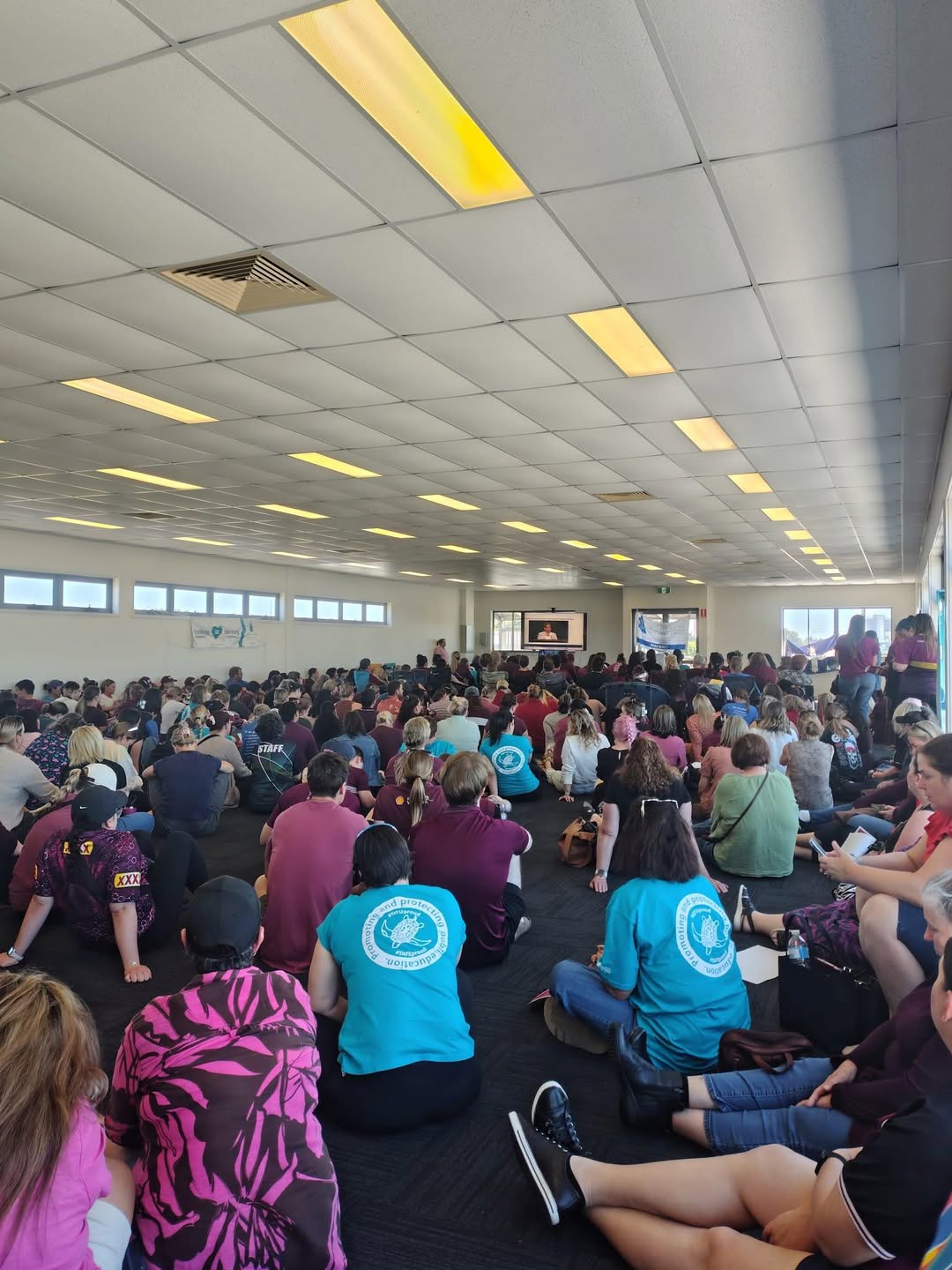


Queensland classrooms faced significant disruption last Wednesday after more than 35,000 teachers walked off the job for 24 hours, citing concerns over school safety, unsustainable workloads, and deteriorating conditions – concerns they say the government continues to ignore.
Despite official statements from the Department of Education claiming schools would remain “operational” with “limited disruption,” many within the profession and school communities said that painted an inaccurate picture.
“School principals were forced to send the email you received,” one anonymous teacher told community members.
“All schools sent out pretty much the same info, whether they wanted to or not. I know my principal was appalled at having to send the letter dictated to them.”
“Ed Qld are pretending like schools could safely carry on without teachers... There were over 35,000 teachers who voted for this strike. For Ed Qld to say there would be limited disruption with 30,000+ teachers not at school was actually a huge slap in the face, and wasn't even accurate.”
The Queensland Teachers’ Union (QTU) had formally rejected multiple offers from the Department of Education in July, leading to last Wednesday’s state-wide stop-work action. According to the department, the matter was referred to the Queensland Industrial Relations Commission.
While the department maintained that “schools would remain operational” and that “student safety and wellbeing” were a priority, frontline education workers said that assurance failed to reflect the reality on the ground.
Prior to the strike, one local teacher said, “We are actually really worried about the teacher aides and students, especially since one of the reasons we are striking is because of increased workplace violence.”
A teacher aide, who also wished to remain anonymous, echoed those concerns.
“On a normal day it is a stressful job worrying about our and the kids’ safety, let alone a day without teachers there. I really hope most parents considered keeping their kids home.”
The Department’s public messaging around business-as-usual reportedly caused confusion and frustration among some families.
One local mother shared her view on the situation.
“As much as I can empathise with the teachers, I didn't have the opportunity to keep them home. I also work and I couldn’t afford to take leave without pay. Again, not because I don’t respect the teachers. I wish them all the best and hope they gain what they deserve from the strike.”
Another parent was more critical of the official narrative.
“Schools were directed to tell families there would be no disruption. It's all part of the games they’re playing to harm our teachers’ chances of improved conditions and pay.”
At the core of the strike action were what teachers described as unsafe classrooms and impossible workloads. While salary negotiations were ongoing, many educators insisted that pay was far from their main concern.
“It’s not just about pay. Actually, pay is probably the thing teachers are least concerned about,” one teacher said.
“Mostly it’s about safe classrooms and reduced workload — reducing pointless red tape that doesn’t help our kids learn, but rather hinders it.”
Teachers pointed to the mounting unpaid demands they face, such as afterschool staff meetings, report writing and assessment, parent-teacher interviews and stakeholder meetings, and attendance at school camps, often with no overtime or time in lieu
“We earn nothing to go spend an extra 19 'units' of our lives away from our own families — not even a day in lieu,” the teacher explained.
“The government offered us a $100 bonus for overnight camps to try and entice us to take their 2.5% pay rise that doesn't even meet inflation.”
The QTU has reiterated that the strike aimed to push for genuine reform, safer classrooms, less bureaucratic red tape, and proper recognition of the escalating demands placed on educators.
While the Department stated it was committed to achieving a negotiated outcome that values our Queensland state school educators, many on the ground said those words would ring hollow without meaningful change.
“Housing safety. Education safety. Child safety. It’s all connected,” said one teacher.
“This isn’t a day off. It’s a cry for help.”
Hundreds gathered at the Bluewater Quay and 500 Pavilion last Wednesday as over 35,000 teachers from across the state struck, demanding safer classrooms and better working conditions. Photo source: Rosie Dhumbara Gangalidda (Facebook)